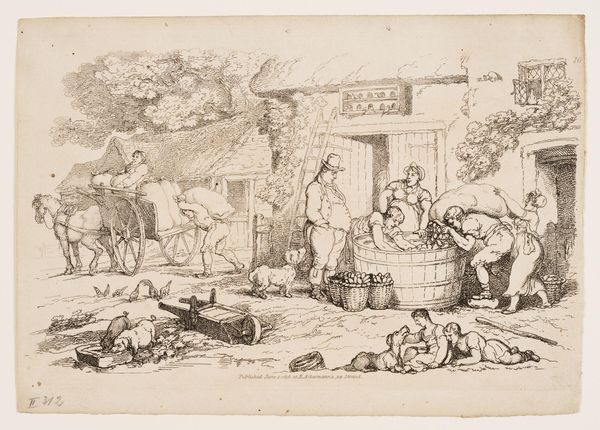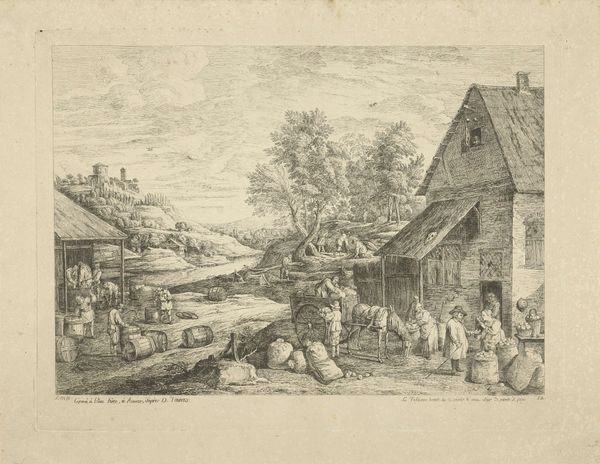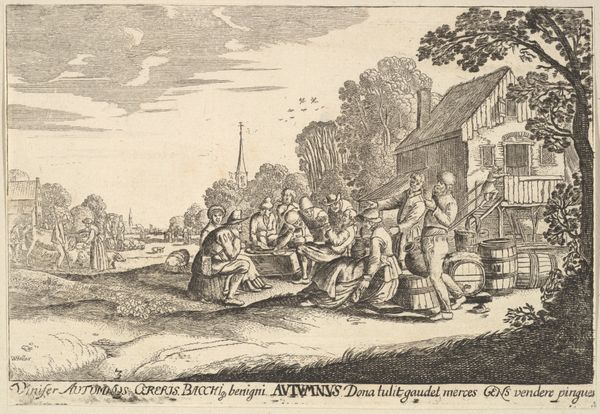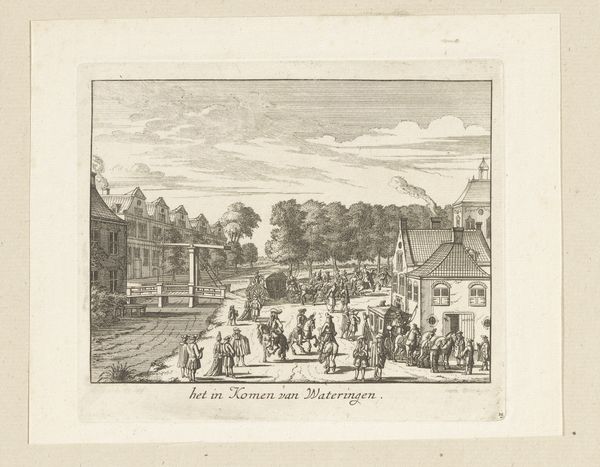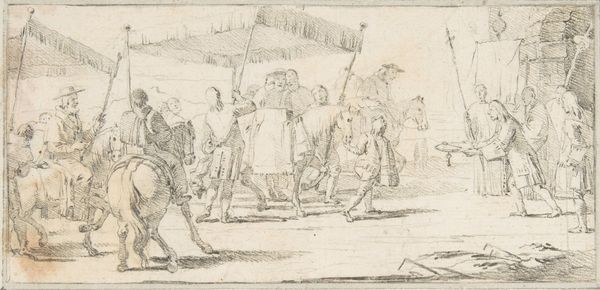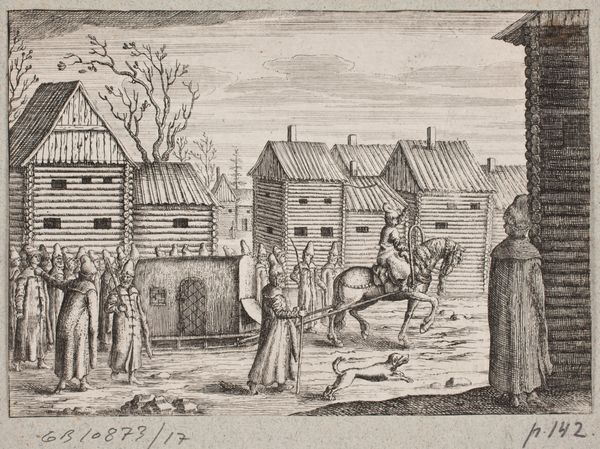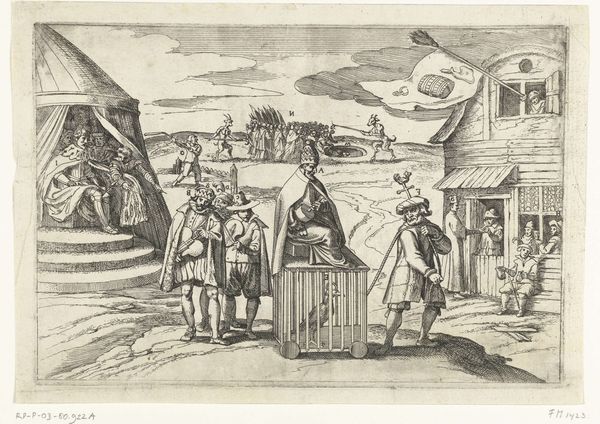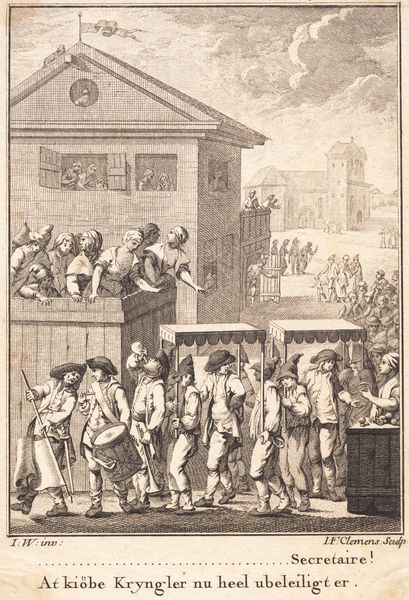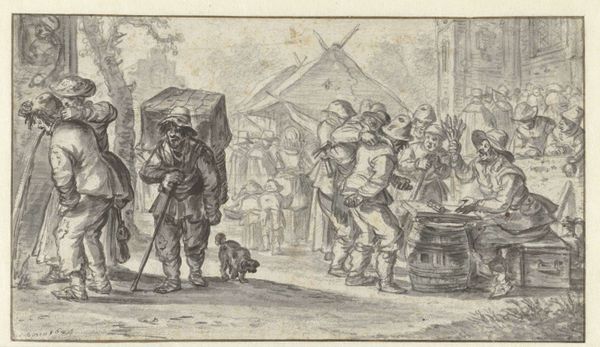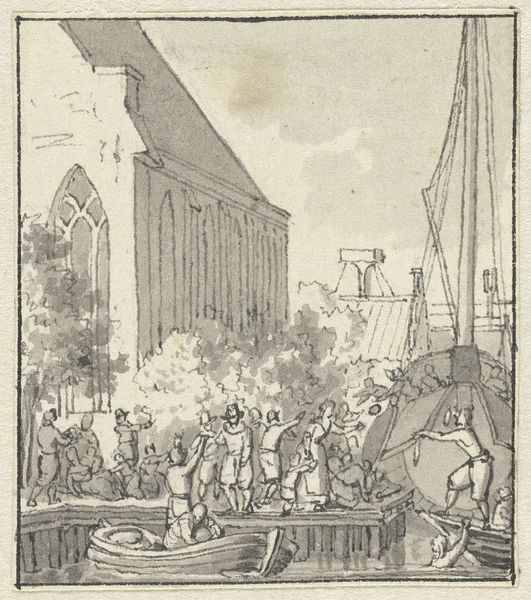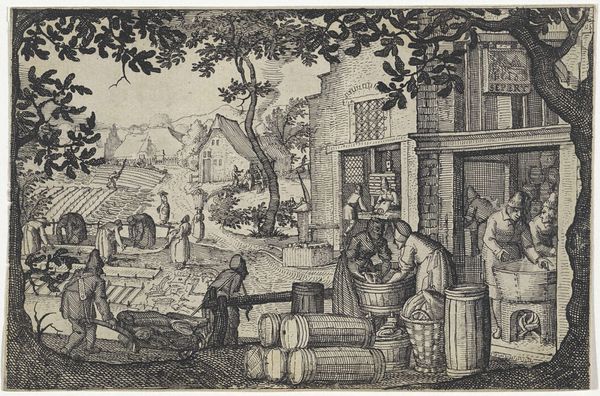
drawing, paper, ink
#
drawing
#
dutch-golden-age
#
figuration
#
paper
#
ink
#
cityscape
#
genre-painting
#
realism
Dimensions: height 187 mm, width 283 mm
Copyright: Rijks Museum: Open Domain
Editor: So, this ink and paper drawing is called "Marktscène" – "Market Scene" – by Willem Schellinks, and it's from somewhere between 1637 and 1678. It's so detailed, but also has this faded quality, like looking at a memory. All those figures crammed into the square – I’m curious about the everyday life being depicted. What stands out to you in this piece? Curator: The drawing offers a window into the social and economic life of the Dutch Golden Age. Look closely – it's not just a scene of commerce; it's a portrait of community. How does the presence of a marketplace influence social interactions, the dissemination of news, even the formation of local identity? The artist, Schellinks, places us in a very specific time and location, wouldn’t you agree? Editor: Absolutely. The market square feels almost like a stage. It does make me think about how different social classes are interacting here, or not interacting, really. There’s almost a division between the people near the building on the left and the more affluent figures in the center. Curator: Precisely! Think about the role of the artist too. Why did Schellinks choose this subject, this viewpoint? Was he commissioned, or was this his own commentary on the changing Dutch landscape, where commerce and cityscape became emblems of national pride? This work is now housed in the Rijksmuseum. Do you think this would have shifted the viewing lens over time? Editor: That's a great point, how the artwork’s institutional context affects our understanding today versus its original viewers. It was definitely insightful seeing the dynamics of the market through a social and historical lens! Curator: Agreed! Thinking about how artworks shape and reflect their context—and how that changes over time—is key to understanding art's public role. It gives us a greater awareness.
Comments
No comments
Be the first to comment and join the conversation on the ultimate creative platform.
